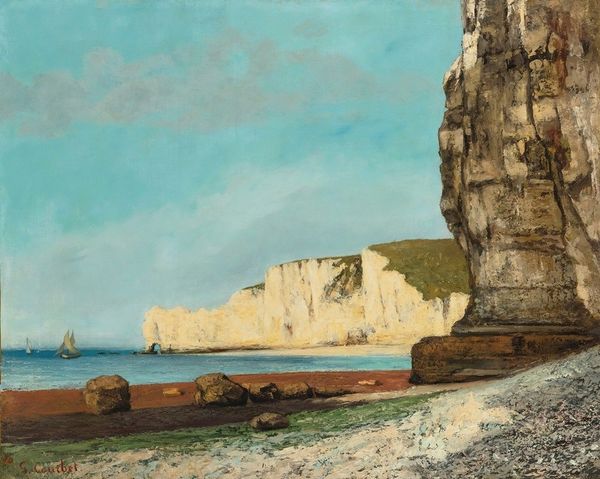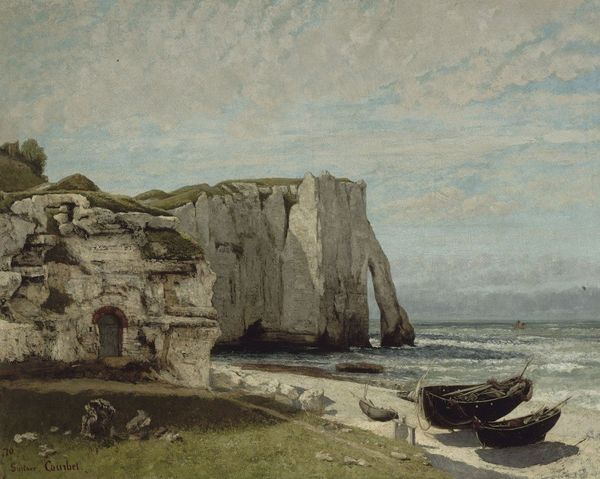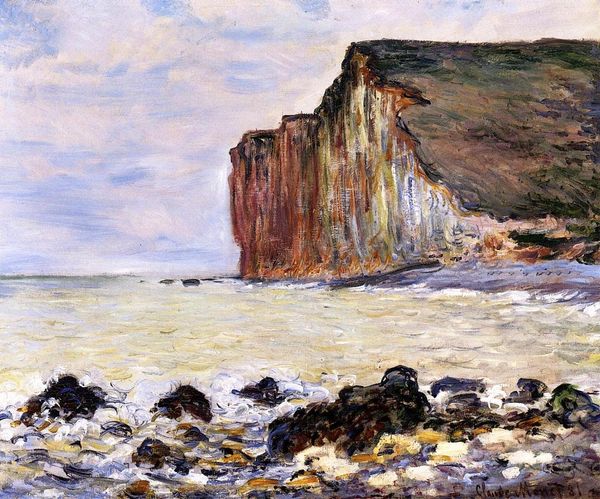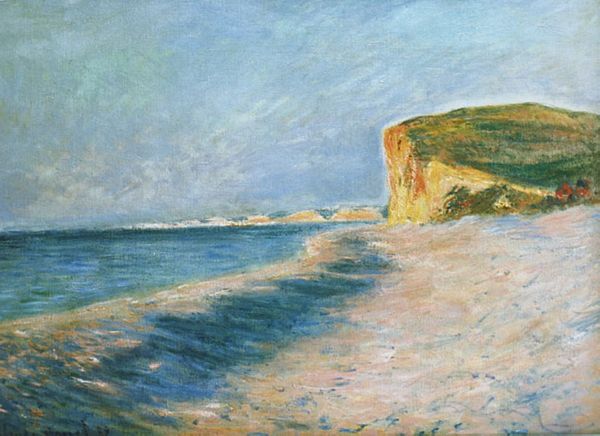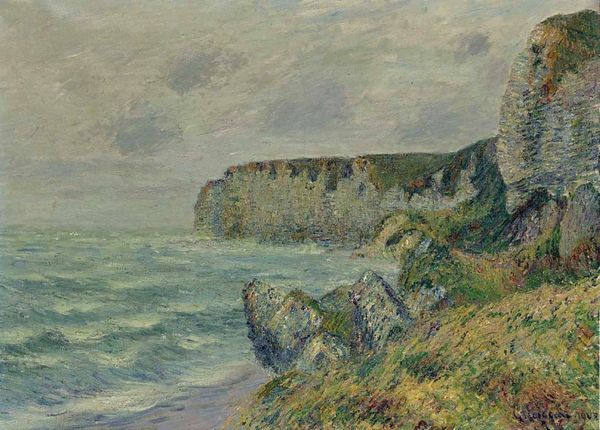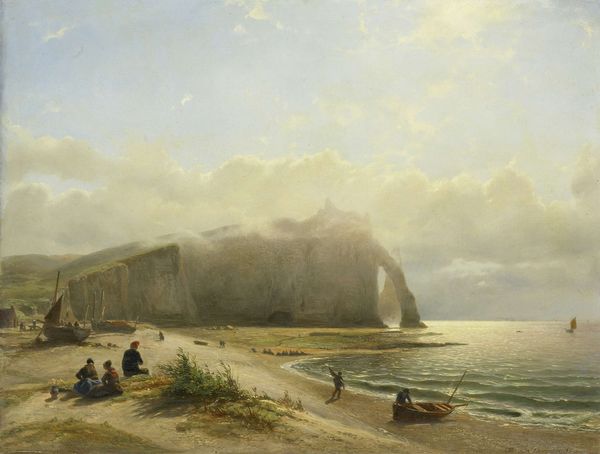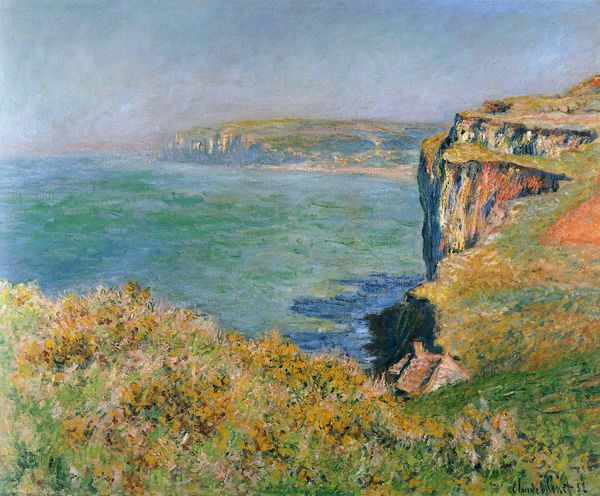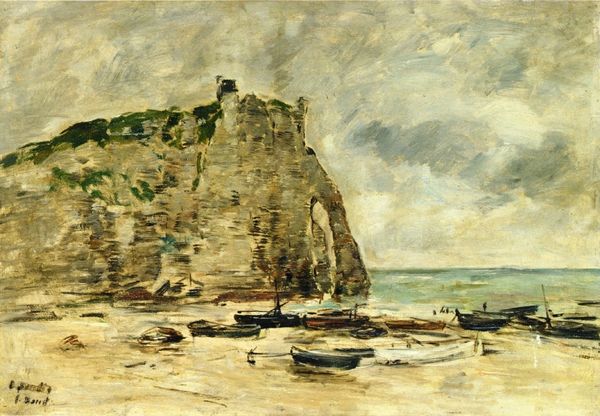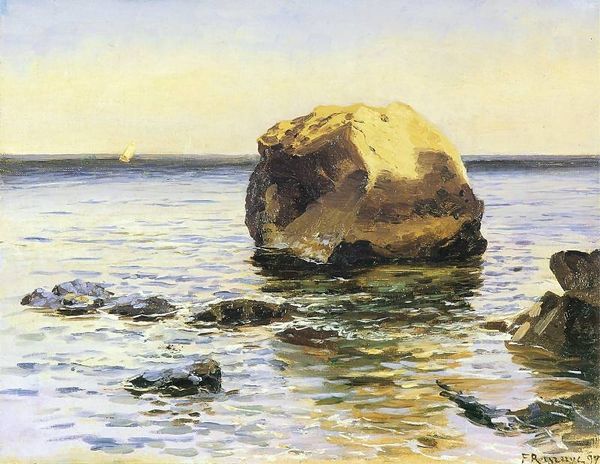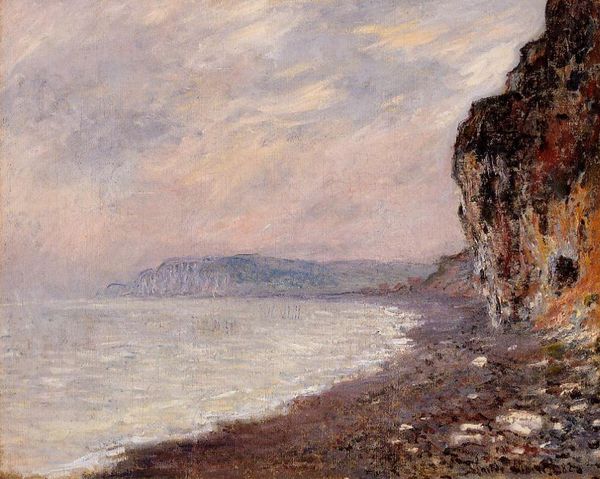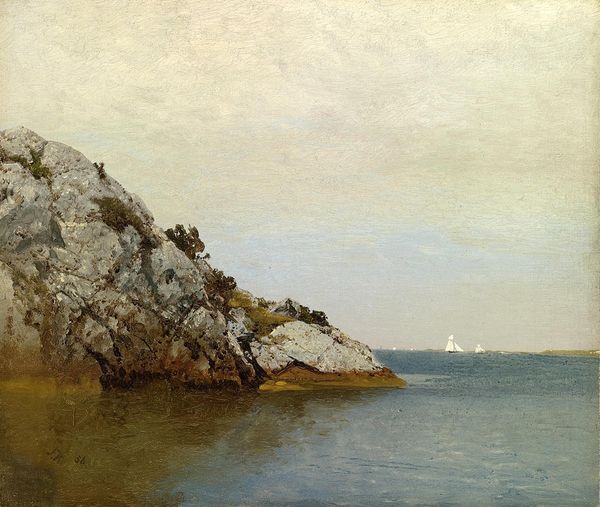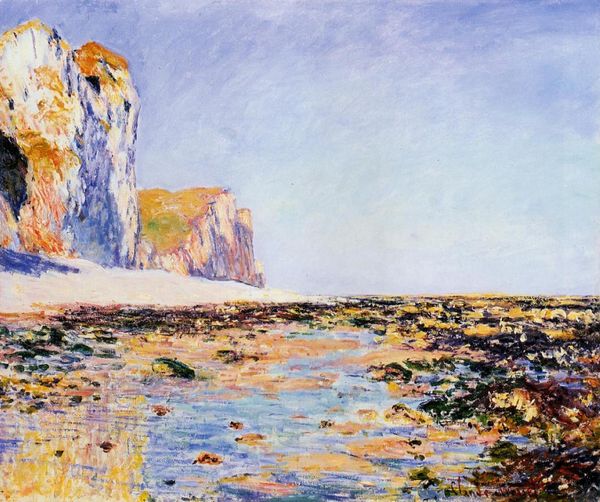
Copyright: Public domain
Editor: We’re looking at Gustave Courbet's "Bay with Cliffs," created in 1869 using oil paint. The scene is dominated by the imposing cliffs and moody sky, but there's almost a stillness to it, despite the implied movement of the sea. What strikes you about this piece? Curator: It is a powerful essay on texture and form. Note how Courbet uses the materiality of the oil paint to differentiate surfaces. Observe the stratified, almost brutal application on the cliffs, contrasting with the smoother, blended strokes depicting the sky and water. Editor: So you're saying the painting's meaning is found in how he applied the paint itself? Curator: Precisely. Consider the rough impasto of the cliffs. It communicates a sense of geological weight and permanence. The gradations of light and shadow, achieved through varying the paint’s thickness and hue, model the forms, suggesting a complex structure. Editor: And the boats in the foreground? Do they contribute to this textural exploration? Curator: Indeed. Though smaller in scale, their detailed rendering offers a focal point, anchoring the composition. They create a formal relationship with the monumental cliffs in the background, juxtaposing the manufactured with the natural. The contrast reinforces the overall dialogue of textures, thus deepening the painting’s structure and form. Editor: That's fascinating. I hadn’t considered how much the physical application of paint could contribute to the meaning. Curator: Art like this invites us to perceive how visual composition alone conveys the narrative. Seeing is knowing. Editor: Absolutely. I'll definitely look at paintings with more scrutiny now!
Comments
No comments
Be the first to comment and join the conversation on the ultimate creative platform.
